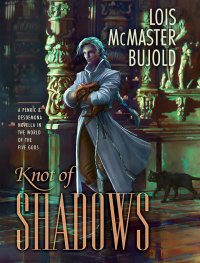Paul Di Filippo Reviews Fire & Blood by George R.R. Martin
 Fire & Blood: 300 Years Before A Game of Thrones, George R.R. Martin (Bantam 978-1524796280, 736pp, hardcover, November 2018)
Fire & Blood: 300 Years Before A Game of Thrones, George R.R. Martin (Bantam 978-1524796280, 736pp, hardcover, November 2018)
When first the weighty brazen tome yclept Fire & Blood did wend its serendipitous way into mine hands, I was struck with poignant recognition, as by the sharp lance of mine foe. “Magister Martin,” I did spontaneously vociferate, “hath written his own version of The Silmarillion!” But little did I wot that I had been anticipated in my simple, addlepated jest, for Martin himself had already dubbed his creation “the GRRMarillion.”
Okay, enough with the cod medievalisms, especially since my silly stylings above resemble in no way the lean and efficient and slyly seductive and instructive prose in the book at hand. And what exactly does Fire & Blood represent, you ask? Not the continuation of the main narrative of A Song of Ice and Fire that we all eagerly await in the forthcoming The Winds of Winter. Rather, it is an account of the history of the land of Westeros, focusing on one family, the Targaryens, many centuries before the realtime saga. In a sense, it accompanies the prior issuance of The World of Ice & Fire companion, for much of this new text was originally created for that project but never used. And the current tract will be matched, if all goes well, by a similar second volume.
Does all this composition and publication minutiae make the book sound esoteric and dull? I hope not! For the actuality is just the opposite. Although the text is, for the most part, a recounting rather than an enacting—in other words, you are generally processing the material through a scrim of chronicle-minded rendition, rather than being immersed in a sensory-keyed mental movie—the text is filled with such a wealth of incident and so many colorful characters—maybe, for some, a potentially overwhelming profusion–that your interest and attention should be fully engaged. I for one last romped in GRRM’s universe in 2011, when A Dance with Dragons appeared, and, to be honest, many of the details of the vast tapestry of Westeros have faded from my memory. But nonetheless, I found myself captivated by this account, which is told in the earnest, straightforward, somewhat bardic style of antique history texts, with a few colorful flourishes at appropriate places.
We begin in a literal year zero, when the first ruler named Aegon unites Seven Kingdoms into the Westeros we know from the main saga. All chronology dates from his triumphs. Seven hundred subsequent pages will serve to cover the next one-hundred-and-thirty or so years, or basically only about three or four more generations of endlessly contentious rulers. This ratio of years to pages indicates that we will explore in some significant depth a plethora of births and murders, plots and treacheries, battles and civic achievements, invasions and dragonly doings. But the main thrust of the account is a realpolitik look at the mortal quest for power and submission, governance and conquest, although we do get occasional divergences, such as tales of plagues and questing sea voyages into unknown realms. (Gossip recounted by the bawdy dwarf named Mushroom is prime fun.)
Additionally, much welcome wordage is devoted to affairs of the heart and carnality that power many of the doings. As readers know, the folk of Westeros are a lusty bunch, and this aspect is not slighted. Perhaps the most vivid instance involves the wayward ways of Princess Saera, who corrupts her peers with dire results.
The vast arc of the history moves from the early bold achievements of Aegon the First, through the brutal dissensions among his heirs, and into the golden age of Jaehaerys, who ruled for almost sixty years. His reign fills almost two hundred pages of the text. Next comes a short intervening period of unexceptional quiet before Westeros is plunged into civil war as two of the royals, Aegon the Second and Rhaenyra, dispute the Iron Throne. The book ends with the conclusion of that conflict and a Regency, setting us up for the arrival of Aegon the Third.
Martin is scrupulous about charting the recurrences and patterns of his dynasty, comparing a person to their descendants or ancestors as deemed relevant, thus illustrating the larger inescapable tides of history. He is also a dab hand at analyzing the personality traits that either doom or elevate a person to meet their destiny. We experience the complete range of human types, from craven to courageous, sly to forthright, bold to indecisive, loving to vengeful. There is a bracing lack of modernity (never mind postmodernity) about these people, as they exhibit traits and behaviors we tend to qualify as primeval or archaic. One truly feels that one is witnessing the past as a foreign country, even if it is the past of an imaginary subcreation.
Much in line with the main saga, real magic is downplayed. There’s actually very little of it in evidence, no spells or divine interventions. Most of the weirder doings—the dragons, a princess literally packed with destructive alien beings—can really be chalked up to nature. And yet, of course, the sum total of the doings creates a potent fantasy atmosphere, just as in the Gormenghast books. (Note that one of the families herein bears the name Peake.) Additionally, from time to time, echoes of Moorcock’s Melniboné arise, when descriptions of the silver-haired, violet-eyed Targaryens and their famous swords leap off the page.
As mentioned earlier, Martin delivers this munificence of plot in a rather matter-of-fact, somewhat distanced manner—these are the doings of people long dead and buried—that militates against complete submission to the dream. There are scattered moments when the vividness quotient shoots up—a royal traitor being given to a dragon for the beast’s breakfast, for example—but generally one’s pulse will not pound. The book is far from a mere set of author’s notes to himself, but is more formal than otherwise.
Lastly, mention must be made of the gorgeous illustrations by Doug Wheatley, which range from half-pagers to double-page spreads. To my eyes, they capture to ambiance and look of the tales perfectly, even if their black-and-white can’t literally depict all the floods of red blood and waves of yellow dragon flames.
 While you are here, please take a moment to support Locus with a one-time or recurring donation. We rely on reader donations to keep the magazine and site going, and would like to keep the site paywall free, but WE NEED YOUR FINANCIAL SUPPORT to continue quality coverage of the science fiction and fantasy field.
While you are here, please take a moment to support Locus with a one-time or recurring donation. We rely on reader donations to keep the magazine and site going, and would like to keep the site paywall free, but WE NEED YOUR FINANCIAL SUPPORT to continue quality coverage of the science fiction and fantasy field.








I probably missed it , is there a guide to the Wheatley illustrations?